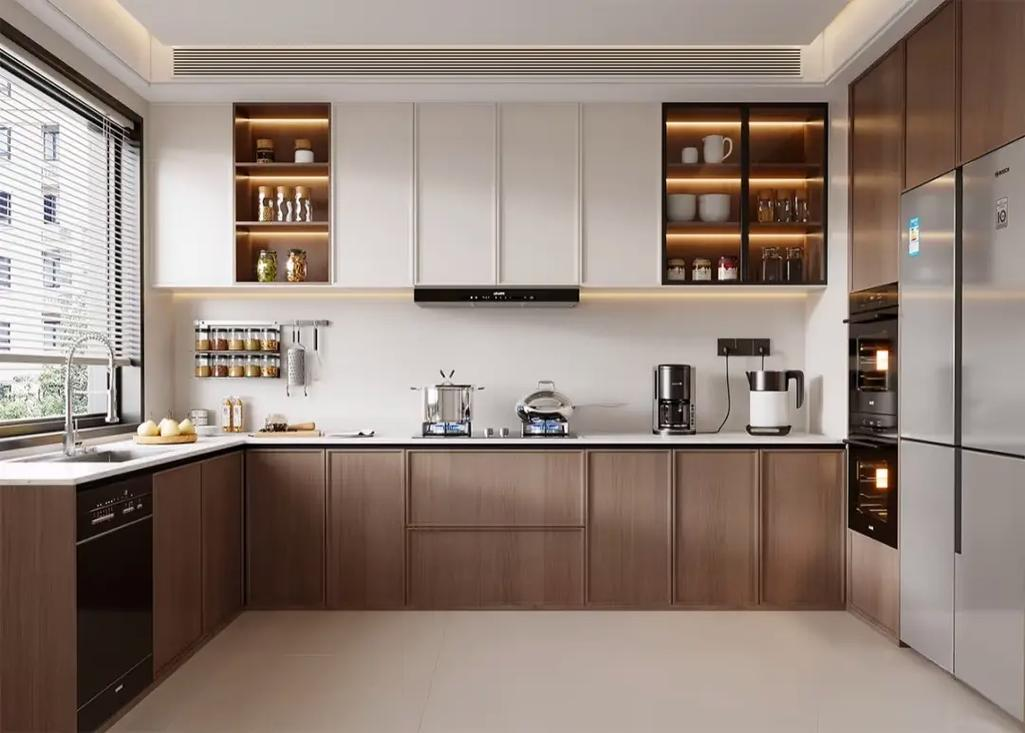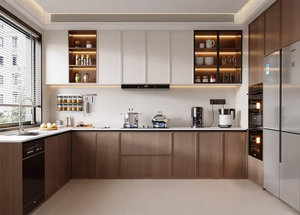
Detailed Explanation of Cabinet Inspection Methods and Standards Inspection Services for Warehousing and Factory Audits
The kitchen cabinet, as the core component of the kitchen, its quality directly affects the user experience and home safety. To ensure that the cabinet products meet the design specifications and market requirements, systematic inspection and testing must be carried out. This article, based on the key quality control points in the factory inspection and testing process, elaborates on the inspection standards, testing methods and factory audit points of the kitchen cabinets, providing practical references for purchasers, quality inspectors and project managers.
I. Scope of Application
This standard is applicable to the inspection and testing of various types of integrated kitchen cabinets, including cabinet bodies such as hanging cabinets, floor cabinets, decorative cabinets, and mid-high standing cabinets, as well as components such as door panels, countertops, hardware accessories, and functional accessories.
II. Main Inspection Standards and Basis
The inspection of cabinets shall refer to the following international, national and industry standards:
QB/T 2531-2010 "Kitchen Furniture"
GB 18584-2001 "Limits of Hazardous Substances in Interior Decoration and Furnishing Materials - Wooden Furniture"
ISO 9001 Quality Management System (Factory Audit Requirements)
ANSI/KCMA A161.1 (American Cabinet Manufacturers Association Standard)
EN 14749 (European Standard for Home Storage Products)
III. Key Inspection Items and Methods
1. Document and Label Verification
Technical documents: Verify the consistency between product drawings, process documents, and material lists (BOM) and the actual items;
Certification Mark: Check if there are any certification marks such as CE, FSC, CARB, etc. (depending on the requirements of the sales region);
Instructions and labels: The installation instructions, usage and maintenance guidelines, and warning signs should be complete and in correct language.
2. Material Inspection
Board Material: Check the thickness, density and environmental protection grade (such as E0, E1) of base materials including particle board, medium-density fiberboard and solid wood.
Surface finish: The PVC film, melamine finish, etc. should have no particles, bubbles or peeling.
Edge sealing quality: The edge sealing strips are tightly bonded to the board pieces, without any phenomena such as delamination, overflow of adhesive, or warping.
Hardware accessories: Hinges, guide rails, handles, etc. are of the same brand and specifications as those specified in the contract.
3. Dimension and Tolerance Inspection
Cabinet dimensions: Deviation in length, width, and height ≤ ±1mm;
Door pocket gap: The gap between doors ≤ 4mm, the gap of the drawer ≤ 0.5mm;
Diagonal error: The diagonal error of the cabinet ≤ 2mm, and the diagonal error of the drawer ≤ 2mm;
Surface flatness: Check with a 2-meter ruler. Tolerance ≤ 3mm.
4. Structure and Assembly Quality
Cabinet structure:
There are no visible gaps between the adjacent cabinet bodies.
The back panel is firmly installed without any scratches or edge gaps.
The base adjustment is stable, and there is no shaking when it lands.
Door pocket installation:
The door drawer opens smoothly without any noise.
The hinges are firmly installed and require reinforcement nails for fixation.
The magnetic clasp is properly tightened and loosened, and the switch operates smoothly.
Installation of the lifting blocks:
The hanging block is tightly attached to the wall, and the depth of the wooden plug is ≥ 5 cm.
The length of the fixing nails is ≥ 4 cm, and there is no loosening phenomenon.
5. Surface Inspection
Splicing Markings: At a distance of 2 meters, there should be no visible joints at the splicing points of the artificial stone countertop;
Rear water seal: The gap with the wall should be ≤ 3mm, and it should be sealed with sealant.
Resistance to pollution: Test the anti-pollution performance of the countertop using soy sauce, coffee, etc.
6. Hardware and functional accessories
Rails and hinges: Smooth sliding, no obstruction or noise;
Drawer and pull frame: Installed firmly, easy to pull.
The basin and faucet: Installed tightly, with no leakage.
7. Safety Inspection
Sharp edges and sharp points: All edges that can come into contact with objects should be chamfered or rounded.
Structural stability: After the hanging cabinet is installed, there is no shaking, and the load-bearing capacity meets the standards.
Environmental protection performance: The formaldehyde emission meets the requirements of GB 18584 (≤1.5mg/L).
IV. Key Points of Factory Audit
During the factory audit process, it is necessary to comprehensively assess the quality management system and production capacity of the manufacturing enterprise:
Quality Management System:
Has it obtained ISO 9001 certification?
Do you have complete quality control documents (inspection procedures, operation instructions)?
Raw material control:
Supplier qualifications for panels, hardware, adhesives, etc. and records of incoming material inspection;
Does the material's environmental protection level meet the requirements (such as the CARB certification)?
Production process control (IPQC):
Precision control of processes such as cutting, edge sealing, and drilling;
Monitoring of process parameters such as edge sealing bonding strength and hinge installation torque.
Testing equipment and calibration:
Calibration of vernier calipers, tape measures, formaldehyde detectors, etc. on a regular basis;
Are the durability testing equipment (such as the hinge fatigue testing machine) complete?
Traceability system:
From raw materials to finished products, there should be unique identification and traceability records.
Compliance and Certification:
The product must obtain the necessary certifications (such as CE, FSC) and comply with the regulations of the target market.
V. Common Defects and Judgement Criteria
Defect Category Concrete Manifestation Judgement Criteria
Severe Defect (Critical) Excessive formaldehyde, structural instability, hardware failure Reject the batch outright, no further inspection
Major Defect (Major) Sizing deviation, edge glue detachment, door drawer jamming AQL = 1.0
Minor Defect (Minor) Slight scratches, color difference, unclear marking AQL = 2.5
Sampling Scheme: Follow GB/T 2828.1. Each batch shall be inspected with no less than 3% and no less than 5 sets.
Critical criterion: For serious defects, 0 is accepted and 1 is rejected. For major and minor defects, they are judged according to the AQL standard.
VI. Conclusion
As the core equipment of the kitchen, the quality of the cabinets must be strictly verified in accordance with national standards and acceptance procedures. Through systematic factory inspections, size measurements, functional tests, and factory audits, the risks of the products can be comprehensively controlled, ensuring the safety and user experience of the products. It is recommended that purchasers and quality inspection institutions focus on the environmental friendliness of the materials, the structural stability, and the durability of the hardware, and rely on professional tools and international standards to conduct inspections to ensure that the products meet the design and market requirements. Only by integrating quality control throughout the entire production and inspection process can we provide users with safe, beautiful, and durable cabinet products.
分享这个商品

Detailed Explanation of Cabinet Inspection Methods and Standards Inspe
To ensure that the cabinet products meet the design specifications and market requirements, systematic inspection and testing must be carried out.
